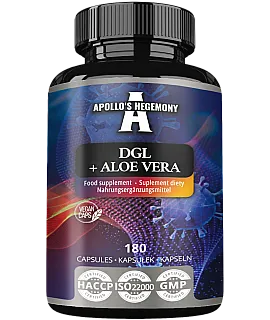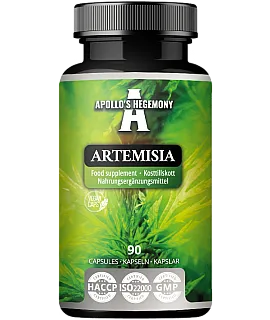Serrapeptase and cardiovascular disease - how does it work and how to use it?

We associate enzymes mainly with food digestion. This is indeed the case - some enzymes actively digest food in the digestive system so that we can absorb nutrients. However, we have a multitude of other enzymes in the body that are essential for all biochemical transformations. There are also a few enzymes that we can take in from the outside that have the ability to tear through the entire digestive system untouched, get absorbed into the bloodstream and produce some therapeutic effect. The most well-known therapeutic enzymes include bromelain, papain, nattokinase and serrapeptase, and in this article we will look at the latter in detail. If you want to find out what properties serrapeptase has, read the article to the end!
- What is serrapeptase?
- How does serrapeptase work? Learn about its properties and effects on the circulatory system
- What else can serrapeptase help with?
- Serrapeptase and nattokinase - a close-knit duo
- Supplementation and dosage of serrapeptase
- Summary
What is serrapeptase?
Serrapeptase, also known as serratiopeptidase, is a proteolytic enzyme, meaning that it digests proteins. Technically, it belongs to the group of gelatinases, which are enzymes that digest gelatin but are not proteases. It is currently used for therapeutic purposes in the form of dietary supplements, and is mainly recommended by European and Japanese specialists.
Originally, serrapeptase was obtained from the bacterium Serratia marcescens (E15) isolated from the gut of the silkworm Bombyx mori L. Serrapeptase is an all-natural substance. Interestingly, in silkworms, it is the enzyme that allows the cocoon to dissolve during the reproduction process.
How does serrapeptase work? Learn about its properties and effects on the circulatory system
Serrapeptase is attributed two main properties:
- anti-inflammatory activity,
- support of cardiovascular health.
However, that's not all, as you will learn in the rest of the article.
The anti-inflammatory properties of serrapeptase were first used in Japan in 1957. It acts as an anti-inflammatory agent by regulating inflammatory cytokines. In preclinical studies, it was compared to aspirin and diclofenac. It significantly modifies cell adhesion molecules that direct inflammatory cells to sites of inflammation. Research reports suggest that serrapeptase may promote wound healing and restore normal skin temperature at the target site of inflammation. The researchers note that serrapeptase is more stable and has higher efficacy when used in combination with metal ions such as zinc and manganese.
An important property of serrapeptase is its fibrinolytic activity. For this reason, it is most often used precisely to improve circulation and to reduce the risk of cardiovascular disease, which is also helped by its anti-inflammatory activity. It is known that serrapeptase can dissolve blood clots and atherosclerotic plaques by breaking down fibrin and other dead or damaged tissue. It can also remove deposits of fatty substances, cholesterol and cellular waste inside arteries. Its fibrinolytic properties can also help with problems of thick blood, stroke risk and thrombophlebitis.

What else can serrapeptase help with?
A lesser-known property of serrapeptase, but no less interesting, is its ability to break down biofilms. A biofilm is a structure formed by bacteria, fungi and other microorganisms for protective purposes to increase the resistance of microorganisms to external agents, even antibiotics. Resistance to biocidal agents increases up to 100 times, compared to free colonies that have not formed a biofilm. Biofilm-destroying substances such as serrapeptase are used as one element in the process of remodeling the intestinal microbiome, such as fighting Candida albicans infections or other pathogens. Serrapeptase can both break down current biofilms and counteract the formation of new ones.
There are also reports of serrapeptase's potential against Alzheimer's disease. We know from studies that serratiopeptidase can reduce the amyloidogenic pathway due to its proteolytic, antioxidant and anti-amyloidogenic activities.
Serrapeptase and nattokinase - a close-knit duo
These two enzymes are very often used together to complement each other. Their properties center around supporting cardiovascular health, but they do not work identically. The actions of serrapeptase and nattokinase are complementary and cover the topic of cardiovascular protection more comprehensively - serrapeptase adds a strong anti-inflammatory aspect, while nattokinase more broadly affects the regulation of cardiovascular parameters.
Supplementation and dosage of serrapeptase
Serrapeptase dosage is measured in enzyme units. Most often, daily doses are measured in the range of 40000-120000 U. Probably the most common regimen is to take 40000 U 3 times a day when the goal is to reduce inflammation or support the cardiovascular system, but it all depends on exactly what the goal of supplementation is and whether serrapeptase is combined with other supplements or medications. For example, when the goal is short-term reduction of acute inflammation, sometimes higher doses are used throughout the day.
Summary
Serrapeptase has many promising properties, but there is still more research to be done on its effects in the coming years to more closely define protocols for therapeutic use. At present, it is valued mainly as part of cardiovascular disease prevention, which is perfectly influenced by its combination of fibrinolytic and anti-inflammatory effects. It is often combined with other anti-inflammatory or circulatory support supplements, mainly nattokinase.
Sources:
- Jadhav SB, Shah N, Rathi A, Rathi V, Rathi A. Serratiopeptidase: Insights into the therapeutic applications. Biotechnol Rep (Amst). 2020 Oct 17;28:e00544. doi: 10.1016/j.btre.2020.e00544. PMID: 33134103; PMCID: PMC7585045.
 ⮜ Previous article
⮜ Previous article
Tyrosine and mood - what are the relationships?
 Next article ⮞
Next article ⮞


